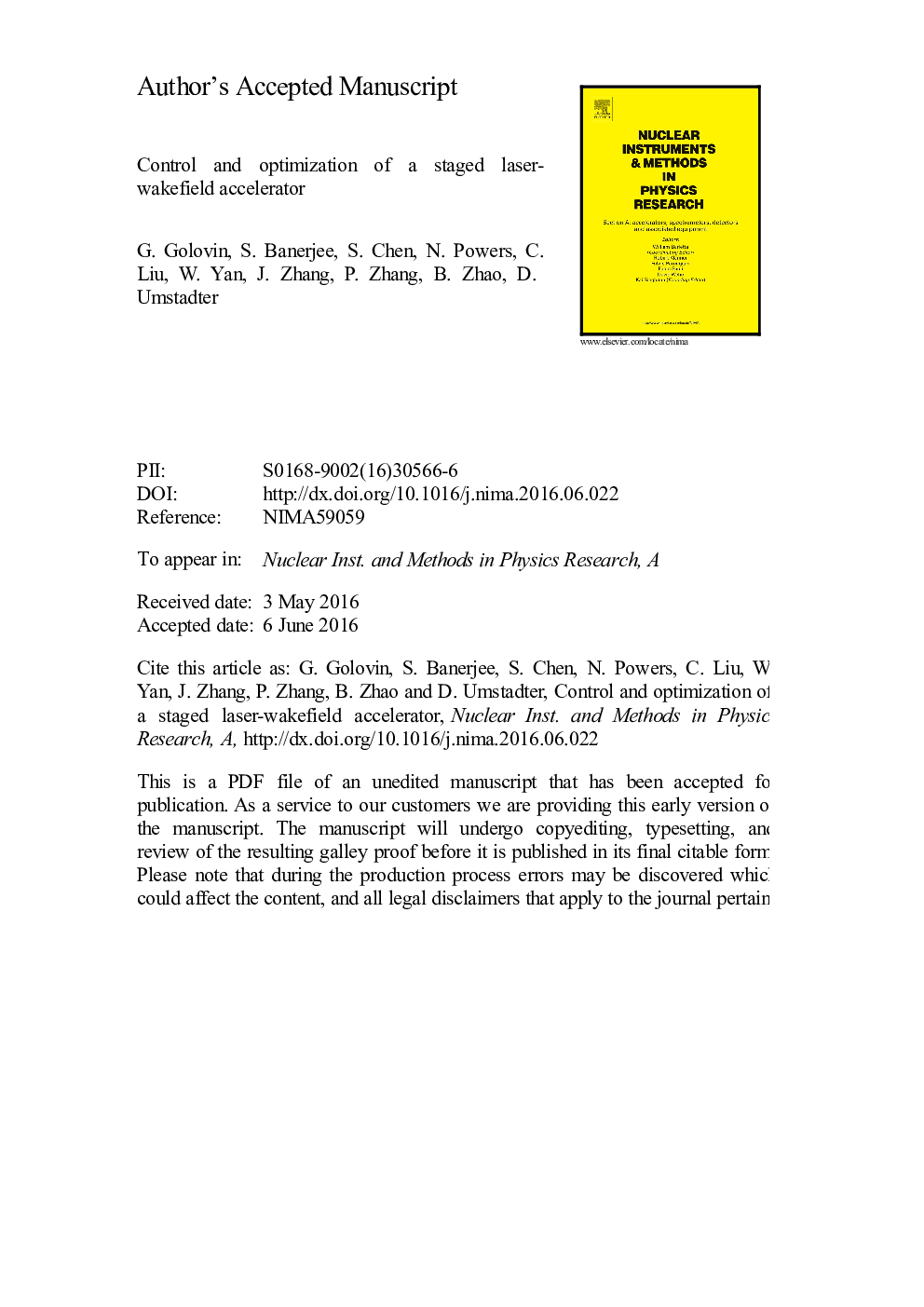| Article ID | Journal | Published Year | Pages | File Type |
|---|---|---|---|---|
| 8168646 | Nuclear Instruments and Methods in Physics Research Section A: Accelerators, Spectrometers, Detectors and Associated Equipment | 2016 | 11 Pages |
Abstract
We report results of an experimental study of laser-wakefield acceleration of electrons, using a staged device based on a double-jet gas target that enables independent injection and acceleration stages. This novel scheme is shown to produce stable, quasi-monoenergetic, and tunable electron beams. We show that optimal accelerator performance is achieved by systematic variation of five critical parameters. For the injection stage, we show that the amount of trapped charge is controlled by the gas density, composition, and laser power. For the acceleration stage, the gas density and the length of the jet are found to determine the final electron energy. This independent control over both the injection and acceleration processes enabled independent control over the charge and energy of the accelerated electron beam while preserving the quasi-monoenergetic character of the beam. We show that the charge and energy can be varied in the ranges of 2-45Â pC, and 50-450Â MeV, respectively. This robust and versatile electron accelerator will find application in the generation of high-brightness and controllable x-rays, and as the injector stage for more conventional devices.
Keywords
Related Topics
Physical Sciences and Engineering
Physics and Astronomy
Instrumentation
Authors
G. Golovin, S. Banerjee, S. Chen, N. Powers, C. Liu, W. Yan, J. Zhang, P. Zhang, B. Zhao, D. Umstadter,
